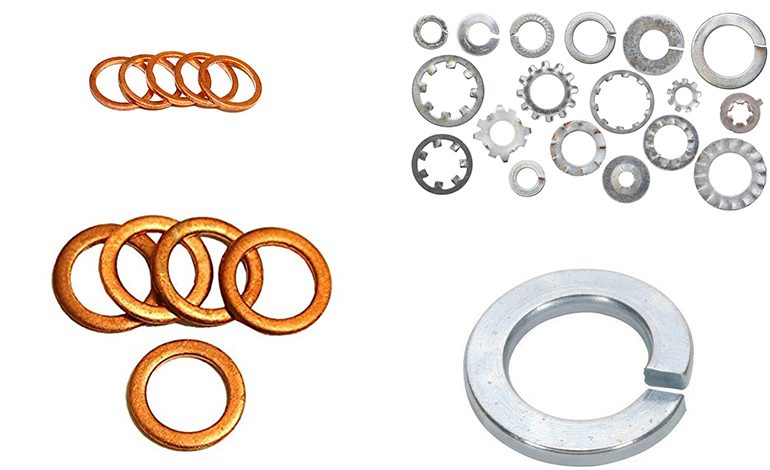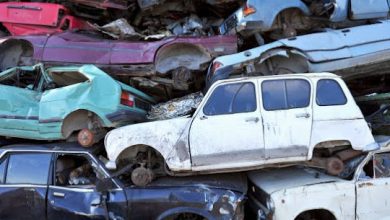Helpful Tips When Buying Aluminium Washers and Steel Washers

Every industrial sector needs washers to make the performance of the threaded fasteners more efficient and reliable. The round pieces of metal with a hole in the middle may look tiny but ensure the effective performance of bigger tasks. Along with keeping the fasteners in place, the washers act like spacers between the fasteners and mating surfaces to prevent damages.
Apart from this, the washers are known especially for their ability to distribute the pressure of nuts & bolts onto a wider surface and prevent them from rusting or moving. The metal hardware serves its purpose in plumbing, automobile, aviation, manufacturing, and construction industries.
Types of Washers
Skipping washers in assemblies and other jobs can reduce your machinery and equipment’s lifespan and increase the risk of injuries in the work environment. To eliminate such situations, it’s necessary to use the right washers in your industrial assemblies. There are different types of washers, each performing a specific task, available in the market. This is why it becomes crucial for you to understand every factor that can help you buy the right washers for your industrial processes.
Two types of washers that have gained immense popularity are Aluminum and Steel washers. You can find several steel washer suppliers and aluminum washer manufacturers that can provide you washers that differ based on their size, finish, and design. But don’t blindfold yourself while buying washers.
The washers are the pieces of hardware that do not get enough attention unless there is a need to replace them. They ensure the effective working of the industrial assemblies, and that’s why it becomes necessary to consider a few factors while buying them.
To help you out, here we are listing down a few tips that can help you invest in the right washers:
Application
The foremost thing to consider while buying washers is their application. The purpose for which you require washers will help you determine what type of washer will fit into your requirements. There may be times in your production unit that the application will change, and the washers you are currently using will become obsolete. Therefore, it’s better to go for washers that have the efficiency to meet the changing needs of your applications.
Environment
Environment plays a crucial role in helping you figure out which washers will work best for your industrial application. For instance, if your manufacturing applications involve extreme heat, it’s better that you go for washers that can withstand extreme temperatures without getting damaged. In addition to temperature, pressure is another critical factor that must be taken into consideration while buying washers. You choose washers that can withstand both the temperature and pressure conditions of your manufacturing unit.
Compatibility with chemicals
If your industrial applications involve dealing with chemicals, you must buy washers that are resistant to corrosive chemicals. By choosing the right washers, you won’t be putting the safety in the work environment at stake. While selecting washers, ensure that they can deal with variables, such as pressure, temperature, and corrosive chemicals.
Wear and tear
Do you have plans to reinvest in washers every few months? Of course, not. Therefore go for washers that can offer a longer service life and resist corrosion and wear & tear. This way, you can save money and reduce the overall production cost by a few numbers. Apart from this, using high-quality washers will help you reduce the chances of the breakdown of your machinery and ensure the highest productivity. Although, wear & tear of washers is unavoidable in the long run but going for washers that can serve you the longest is still a win.
Size
Choose a washer size that perfectly fits your application requirements. Before stepping into the market, find the exact size of the washer you need so that you don’t end up buying the wrong size.
Low friction
Steel and aluminum are good conductors of heat and electricity, and washers made from the same material possess the same features. If you want to prevent sparking in your manufacturing unit, then choosing either of these washers can be the best practice. Using these washers in your assemblies, you can minimize the occurrence of sparking and other situations that can damage life and property.
Summing up
By taking the above-mentioned factors in mind, you can buy the right aluminum and steel washers to support your industrial applications’ needs. In this article, we have covered a few tips that can help you make the right decision when it comes to washers.
The correct washers will help you get the job done right and safely. Whatever washer you want, buy it from a prominent aluminium washer manufacturer and steel washer supplier. It will help you ensure that the washers are of the highest quality and worth every penny of your money.




